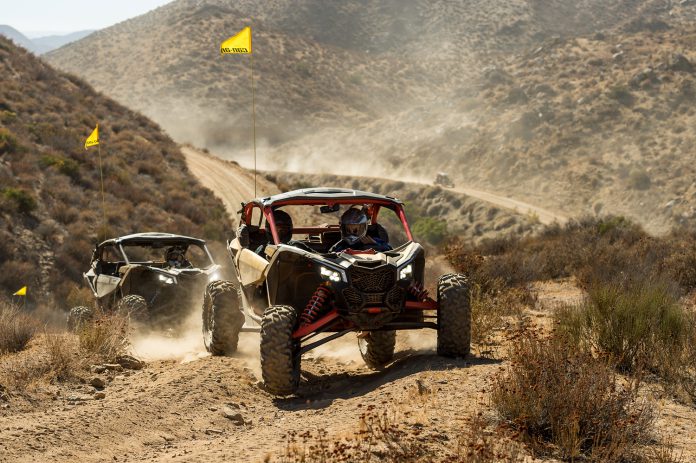Ensenada, Mexico is more than just the home of the Baja 1000, it’s the off-road motorsport capital of Mexico, where dirt riders of every shape and form are welcomed.
This is especially true of those businesses that plaster their décor with stickers from popular off-road brands along with posters and autographic shirts of legendary racers.
The start of our Baja journey aboard Can-Am’s all-new Maverick X3 began about 30 miles outside of Ensenada in the Wine Region of Santo Thomas. Within 10 miles of riding through the interior we crested over to the coastline and were then rolling alongside the Pacific.
It didn’t take long to cover distance because we were tempting the accelerator the whole time to see if we could eclipse the 87-mph governed speed. One thing was certain, if there was only one word to describe the engine development work of the Austrians at Rotax, it would be Wunderbar!
The 900 ACE Turbo was fully designed by Rotax and their key focus was to develop a wide and instantaneous powerband perfectly suited to desert and dunes, but also great for trails and fire roads. Its effectiveness lies in positioning the turbo as part of the exhaust manifold. This significantly reduces turbo lag and delivers instantaneous power delivery.
Can-Am claims acceleration of 0-60 mph in 4.9 seconds. Seat-of-the-pants feel, along with claw marks in the steering wheel from us digging our nails into it in an attempt to hold on, tells us they’re probably not far off the mark.
Transferring all this power to the wheels wouldn’t be nearly as effective without making serious improvements to the transmission. The QRS X transmission is a completely redesigned CVT with larger drive and driven pulleys. Engagement is smoother with a 6-roller drive clutch and a 3-roller driven along with a thicker and wider HD drivebelt.
Can-Am engineers also spent a considerable amount of time reducing the temperature inside the CVT chamber. By increasing the size of the intake and outtake located directly behind the driver’s head and by adding more fins on the driven they were able to reduce chamber temperature by 20-percent and also increase durability.
While we admit all this makes it a tad louder we’ll gladly trade not hearing everything our passenger has to say for increased performance and reliability.
Since the engine is positioned at the rear of the chassis, so is the CVT. Long gone are the days when you have to spend more than two hours ripping half the vehicle apart to change a belt. With a set of spare hands to remove the belt cover bolts you can now change a belt and be up and running in about 20 minutes.



